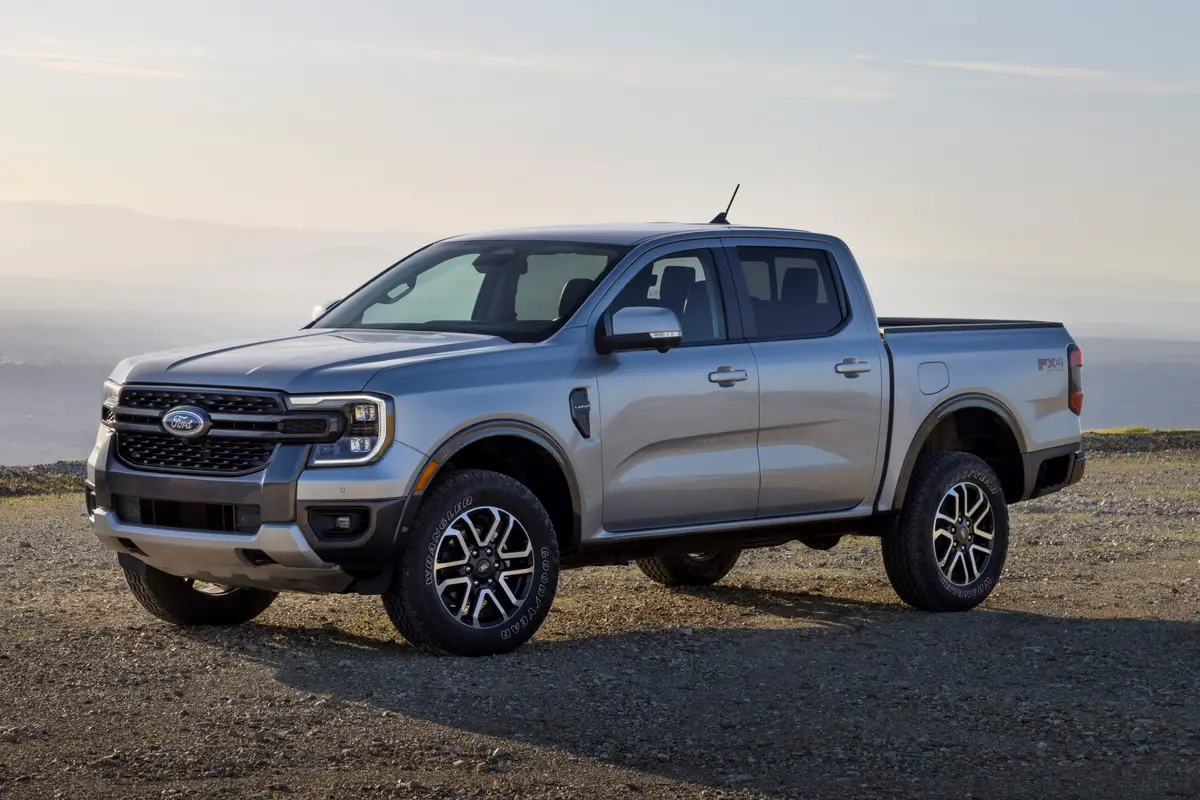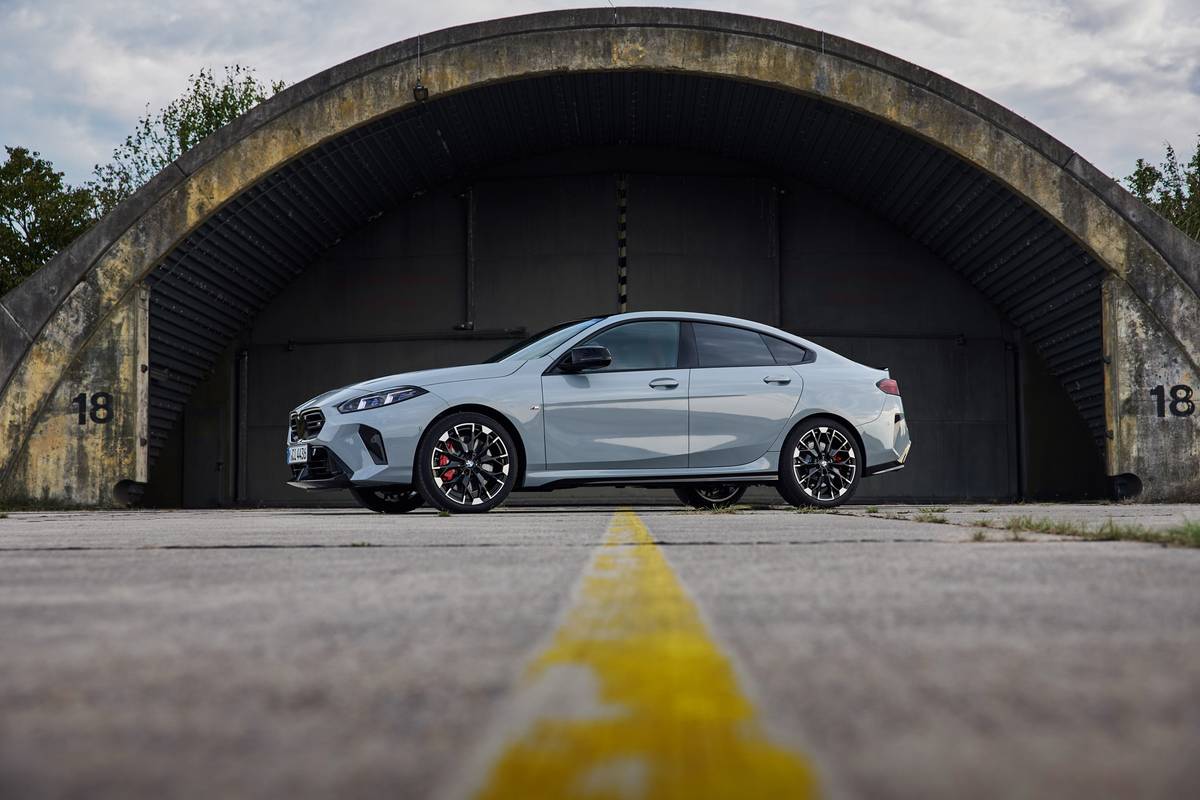chicagotribune.com's view
Always a bridesmaid.
That’s been Mazda’s fate since Ford ponied up enough dough to move from a 25 percent stake in the Japanese automaker in 1979 to a 33.4 percent stake in 1996.
Ford marches down the aisle, while Mazda, to some known only for its Miata roadster, stands on the sidelines.
Of course, you could argue, when Mazda sorely needed a sport-utility vehicle, Ford obliged by supplying it with a version of its Explorer, which Mazda introduced as the Navajo for the 1991 model year.
Only Ford gave Mazda the poor-selling two-door Explorer, not the in-demand four-door, so by the time the ’94 model year drew to a close so had Navajo.
Then, you could argue, when Mazda needed a V-6 engine for its newly designed MPV mini-van for 2000, Ford came through with one. Only Ford gave Mazda its 2.5-liter, 170-horsepower, Duratec V-6, not the peppier 3-liter, 200-h.p., 24-valve, Duratec V-6.
When Ford pays the bills, guess it has the right to call the shots.
Since Navajo’s demise, Mazda has been in desperate need of a sport-ute, the vehicle of choice before, during and after the recent mysterious rise and fall in gas prices.
For 2001, which starts next month in Mazda showrooms, the automaker gets a new SUV, a compact called Tribute, which is a Mazda-badged version of the Escape being sold in Ford showrooms.
Unlike a Navajo clone of the Explorer, Tribute is what Mazda calls a new-from-the-ground-up sport-ute shared with Ford, not a hand-me-down from Ford. Same engines and transmissions, but different sheet metal and, of course, different names.
Some say Mazda took the lead in developing Tribute/Escape by using a 626 platform. Mazda insiders gladly accept credit for Tribute/Escape (Ford insiders foam at the mouth and babble if you even hint that Mazda engineers peeked at the blueprints), but insist Tribute and Escape are built off a never-been-seen-or-used platform.
If you want to keep peace between Mazda and Ford on Tribute/Escape heritage, best you say the birth certificate was lost.
We tested Escape (Cartalk, June 18–Ford insisted all Tribute details be kept under wraps from the media until Escape was previewed) and now turn our attention to Tribute, which is offered in DX, LX and ES versions with 2-liter, 130-h.p. 4-cylinder and the 3-liter, 24-valve Duratec V-6 (Ford got religion in sharing engines?); the choice of 5-speed manual or 4-speed automatic transmission; and two- or four-wheel-drive.
Actually that’s about two versions and several choices too many for a vehicle designated for about 40,000 copies annually; Ford will get about three times that amount (so much for religion).
We tested the top-of-the-line Tribute ES with 4WD, V-6 and automatic.
Ford is considering whether to offer the 4-cylinder and 5-speed in Escape, but Mazda may be the only one offering that combination while Ford relies on the lively V-6 and smooth automatic. But we digress.
The Duratec V-6 is ideal for this machine. Just the right amount of energy while delivering 18 m.p.g. city/24 m.p.g. highway in a 4WD vehicle.
It helps, of course, that the 4WD system is on-demand and not a full-time unit that consumes more gas. Tribute is a front-wheel-drive vehicle that engages all four wheels when it detects slippage. Should you comeu pon snowy pavement or a muddy trail, you can push a dash button and lock into 4WD.
Mazda boasts Tribute is more of a sedan-like performer, Escape more truck-like. Tribute’s suspension has been tuned to deliver firmer ride and flatter handling in the corners, while the steering was tweaked for quicker response than that in the Escape.
After having driven Tribute and Escape, we feel differences in ride and handling may be more in the mind of the beholder.
Mazda likes to say Tribute “is an SUV with the soul of a sports car.”
Someone in the marketing department may have earned a bonus for that bit of braggadocio, but make no mistake that this still is an SUV and not a Ford Focus ZX3 sports coupe. Tribute is a sport-ute designed to compete against the Honda CR-V, Toyota RAV4 and Subaru Forester SUVs–only roomier and with a lot more pop thanks to the V-6.
There’s a lot to like, starting with the basic shape and profile of an SUV–as opposed to a 4WD wagon called an SUV–adorned with ample plastic lower body cladding that not only dresses it up, but also protects against parking-lot dents and dings.
Though step-in/out height is low enough so a running board isn’t necessary (offered as an option on Escape and not needed because it serves only as a dirt catcher), there’s a grab handle above each door.
The rear hatch lid (rear window glass opens separately if you choose) is light and easy to open, and the cargo floor low enough for quick loading and unloading. If you need more room, rear seat backs fold and bottoms remove to expand load capability.
And the cabin is filled with compartments to store things and the required (five) cupholders and power plugs (two) for such accessories as a phone.
Though it has small exterior dimensions (103.1-inch wheelbase/173-inch length), Tribute has a spacious and roomy cabin (noticeably more so than a CR-V or RAV4) that fits four adults in long-distance comfort with generous head, arm and leg room, though thinner door armrests would make long-distance travel easier on the driver’s thighs.
Windows are large to provide very good sight lines, though in keeping with its visibility theme, here’s one vote for larger outside mirrors.
But there are other areas that need to be refined, such as rear windows that lower only half way; seat bottom cushions that would offer more thigh support if a few inches longer; the need for a darker tint on the glass moonroof to reduce glare; a revision in windshield angle so water on the glass coming out of the wiper well doesn’t “ride up” the left side of the glass; and perhaps a tweak or two to the suspension, which tends to change personalities with road surfaces. (The silky smooth ride on flat surfaces gies way to pronounced, though not harsh, vertical movement when the road becomes blemished.)
And despite Mazda’s claim about “soul of a sports car” and a suspension that holds the machine flat in corners and turns, we’d still be less energetic on the accelerator when those big signs with giant arrows appear advising that a sharp turn is ahead. Perhaps the Tribute’s peppy V-6 simply made us more aware of the vehicle’s handling when driven aggressively.
Tribute is small on the outside for easy parking and garaging, big on the inside to hold people and their possessions. With 4WD, it offers all-season motoring, yet respectable fuel economy that bigger and bulkier sport-utes don’t.
Tribute, like its cousin Escape, is a sensibly sized sport-ute for those who can’t squeeze into a mini RAV4 or Chevrolet Tracker but who would get lost in a maxi Ford Excursion or Chevy Suburban and couldn’t afford the fuel in one of those behemoths.
Sensibly sized doesn’t apply just to length, either. Tribute is nearly 4 inches wider than RAV4 and only 0.1 inch narrower than a larger Ford Explorer. You don’t need a shoehorn to enter and don’t have to sit pocket to pocket with fellow occupants.
Tribute prices range from $17,005 for the base DX with 2WD, 4-cylinder and 5-speed to $23,025 for the ES with 4WD, V-6 and 4-speed automatic that we tested. By comparison, the Escape is offered in XLS version starting at $18,160 and top-of-the-line XLT that starts at $22,300 with 4WD, V-6 and automatic.
Standard equipment in the Tribute ES 4WD includes leather seating and a six-way power driver’s seat (leather in the Sun Belt would prompt us to move down to an LX with cloth seats); air conditioning; rear-window defogger; tinted glass; reclining front bucket seats; power windows; tilt steering; power locks; 16-inch, all-season radial tires; trip odometer; and ash “cup.” Anti-lock brakes, teamed with side air bags, is a $495 option.
2001 Mazda Tribute ES 4WD
Wheelbase: 103.1 inches
Length: 173 inches
Engine: 3-liter, 200-h.p., 24-valve V-6
Transmission: 4-speed automatic Fuel economy: 18 m.p.g. city/24 m.p.g. highway
Pluses: Plastic lower-body cladding looks good and protects from parking-lot dings. Easy step in/out height. Low lift height for loading/unloading in back. Host of stowage compartments. Spacious cabin. Rear-seat bottom/backs flip and fold for added cargo room. Good mileage for a 4WD vehicle.
Minuses: Rear windows retract only half way. Larger arm rests rob thigh room on long trips. Short seat bottom cushions. Small outside mirrors. Water rides up left side of windshield. Moonroof could use darker tint. Suspension behavior depends on road surface.
Latest news



